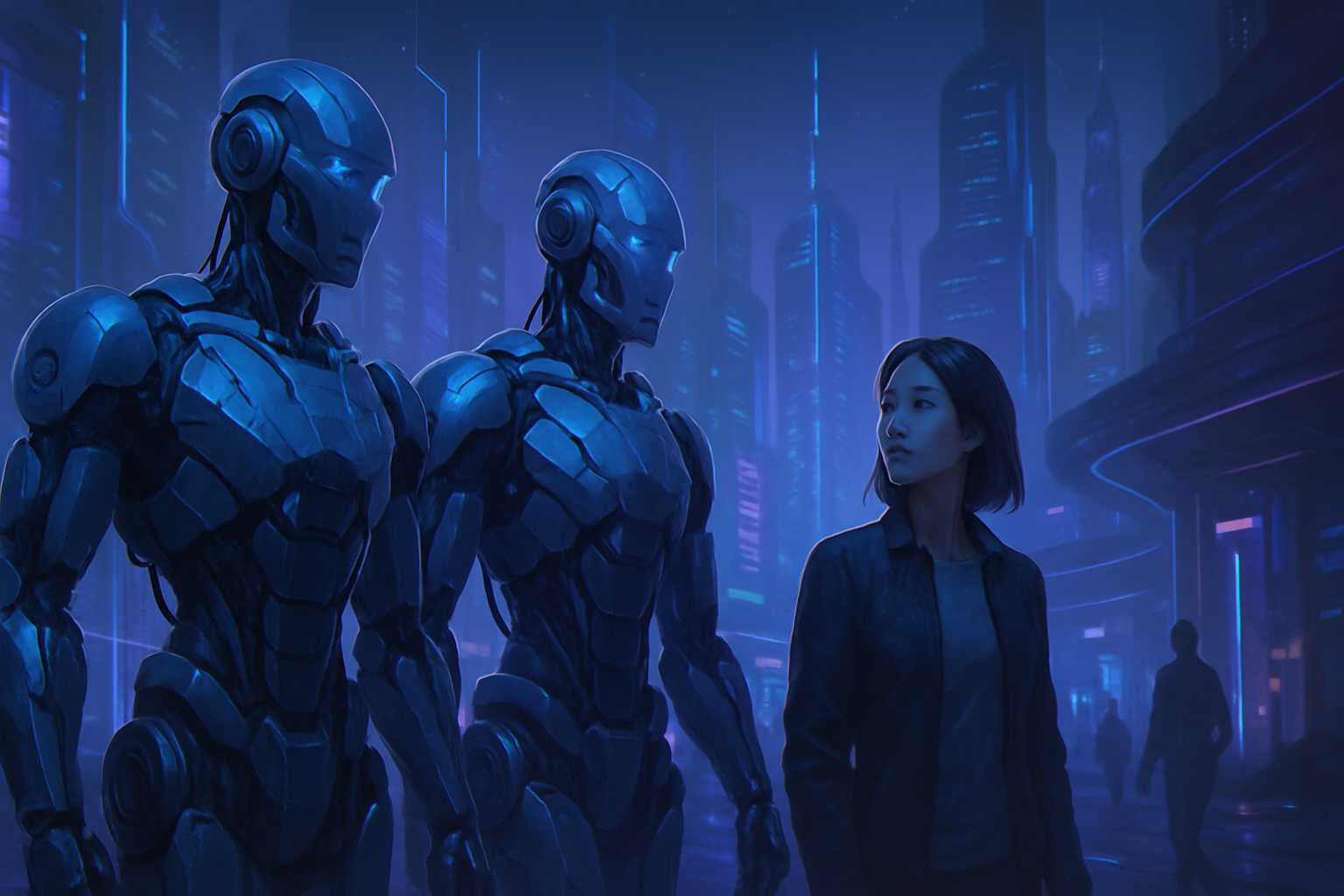*Kari Briski*, Vice President at Nvidia, states that physical agents represent the future of artificial intelligence. This vision signals a revolution in how these technologies will interact with our daily lives and our environment. The autonomous capabilities of physical agents pave the way for unprecedented assistance in everyday tasks, propelling innovation to unimaginable heights. The evolution towards these agents promises to radically transform the economy and work as we know it today.
Kari Briski and the Vision of Physical Agents
Kari Briski, Vice President of Generative AI Software at Nvidia, expresses a profound belief in the future of artificial intelligence. According to her, physical agents, which combine autonomy and intelligence in the real world, will become central to the technological landscape. Nvidia aims to direct its research towards this anticipated revolution.
Characteristics of AI Agents
AI agents are defined as systems capable of perceiving, understanding, and acting within their environment. Kari Briski emphasizes that this autonomy is essential. A physical agent, compared to a virtual agent, must adapt to physical constraints such as gravity and surfaces. The latter have immense potential to accomplish tasks in various scenarios.
Like virtual agents, physical agents rely on generative AI models. This grants them a unique capability for self-assessment and adjustment of their behavior based on the results obtained. These systems are able to continuously improve through experience, allowing them to tackle increasingly complex missions.
Imminent Applications of Physical Agents
Briski anticipates a growing demand for physical agents across various sectors. Industry and logistics, for example, could benefit from robots capable of performing repetitive and labor-intensive tasks or managing complex supply chains. Collaboration between machines and humans will prove invaluable in achieving common goals.
Technical Challenges
The technical challenges surrounding AI agents remain significant. Establishing an infrastructure suitable for these agents requires a systemic approach. It involves enhancing the agents’ memory and improving their efficiency in various contexts. The dynamical collaboration between agents must also be optimized to solve complex problems.
Nvidia is working on developing solutions to overcome these limitations. For instance, foundational models of the world are also being developed to prepare agents for various physical tasks. Semantic analysis of data will play a crucial role in this advancement.
The Advent of Physical AI
Nvidia also discusses the concept of Physical AI, which refers to the interaction between robots and the real world. This combination of artificial intelligence and robotics opens unprecedented possibilities for designing truly autonomous agents. Briski stresses the need for a rigorous methodology concerning training and deployment.
Physical agents, just like their virtual counterparts, must be trained in simulated environments before deployment. This preparation allows them to learn to navigate and act in real situations while respecting physical constraints.
Future Perspectives
Kari Briski predicts that physical agents will play a leading role in addressing the challenges of labor shortages. These technologies could serve as a solution to fill gaps across various sectors, particularly in industrial and urban environments. Process optimization and productivity enhancement are key objectives.
The ongoing innovations and investments in this field herald a promising future. A recent study indicates that the emergence of standards and protocols will facilitate interoperability between agents, paving the way for their widespread integration.
Research is also focused on developing learning models capable of processing different modalities, from text to image and audio. This evolution will enhance the versatility of agents, providing tailored assistance for varied missions.
Nvidia’s Approach Conclusion
Nvidia, through its efforts and research work, is shaping the future of physical agents while anticipating a significant impact on daily life. The technical advancements and innovations deployed represent a major opportunity for companies seeking to innovate and stand out.
FAQ on Physical Agents and Their Future According to Kari Briski (Nvidia)
What are the main advantages of physical agents in artificial intelligence?
Physical agents offer significant advantages such as their ability to perceive and interact with the real world, their autonomy, and their intelligence, making them indispensable for completing various and complex tasks in physical environments.
How do physical agents differ from virtual agents?
Physical agents operate in the real world and are designed to act autonomously, whereas virtual agents primarily function in a digital environment and traditionally interact through text or data.
What types of tasks can physical agents accomplish in the future?
Physical agents will be able to assist in various daily tasks, such as object manipulation, logistics, maintenance, and even in the health sector, supporting professionals in their activities.
What technical challenges need to be overcome to develop physical agents?
Challenges include improving agents’ perception so they can understand their environment, developing long-term memory for complex planning, and optimizing infrastructures to ensure efficient execution.
What is Kari Briski’s vision regarding the integration of physical agents into the daily operations of businesses?
Kari Briski envisions that physical agents will become key tools to help businesses enhance their productivity, fill gaps left by labor shortages, and provide innovative solutions to contemporary problems.
How is Nvidia working to improve these physical agents?
Nvidia focuses on training models for physical agents, using simulations and learning techniques to develop refined capabilities suited for interactions in the real world.
Which sectors could benefit the most from the use of physical agents?
Sectors like manufacturing, logistics, health care, and agriculture are particularly well-positioned to leverage physical agents, as they often require manual interventions and automatable processes.
How might the future of physical agents transform our way of working?
The future of physical agents could revolutionize work by automating repetitive tasks, increasing the effectiveness of human teams, and allowing workers to focus on higher-value tasks.






